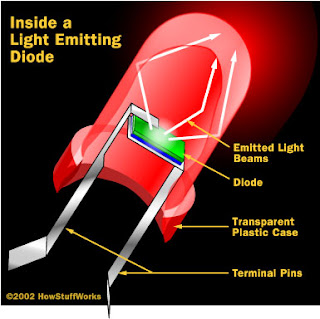LED Lettering and Signage: How it works
A lot of people are requesting LED technology for their signage and lettering, but not so many people are aware of exactly how the LEDs work. So here’s just a little extra information about them for all the tech-heads out there:
So the big advantage of LED illumination is their efficiency. And that’s why government, industries and businesses that are concerned about environmental impacts and their power usage are turning to LEDs for all manner of lighting applications. The increase in demand along with a sharp drop in the price of the semi-conductor materials that are critical in the production of LEDs has acted to bring the price down to a point where they are now feasible for use in retail signage, light boxes and illuminated and architectural lettering.
A key to the efficiency of LED lettering and signage is that the LEDs themselves are constructed in a manner that releases the maximum number of photons (ie light) outward. The plastic bulb which houses them concentrates the light and directs it out through the tip of the bulb. As you can see in this diagram, most of the light from the diode bounces off the sides of the bulb and leaves the bulb at the rounded tip:

If you want even more info, have a look here.
So the big advantage of LED illumination is their efficiency. And that’s why government, industries and businesses that are concerned about environmental impacts and their power usage are turning to LEDs for all manner of lighting applications. The increase in demand along with a sharp drop in the price of the semi-conductor materials that are critical in the production of LEDs has acted to bring the price down to a point where they are now feasible for use in retail signage, light boxes and illuminated and architectural lettering.
A key to the efficiency of LED lettering and signage is that the LEDs themselves are constructed in a manner that releases the maximum number of photons (ie light) outward. The plastic bulb which houses them concentrates the light and directs it out through the tip of the bulb. As you can see in this diagram, most of the light from the diode bounces off the sides of the bulb and leaves the bulb at the rounded tip:

If you want even more info, have a look here.


Comments
Post a Comment